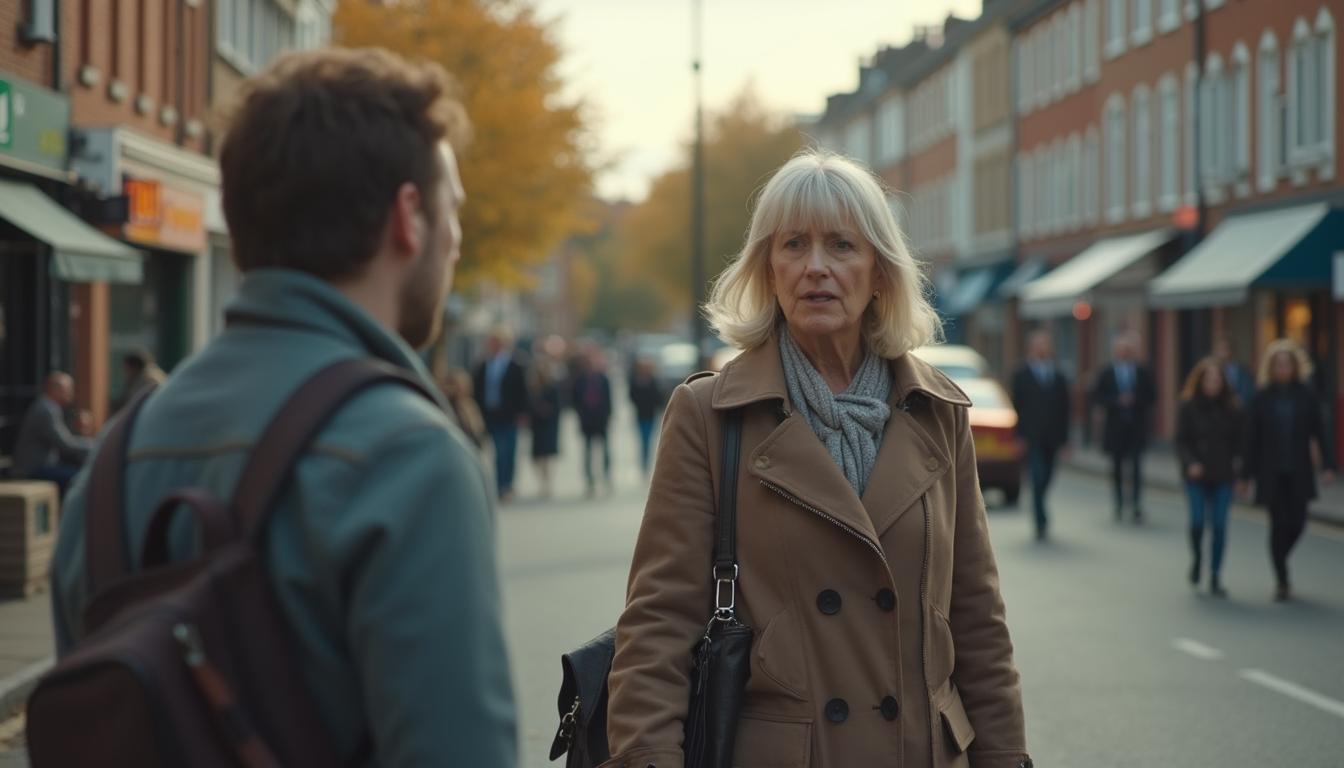London, the bustling heart of the United Kingdom, has long prised its reputation as a safe and accessible metropolis. Yet, in recent months, a storm of controversy has engulfed the Metropolitan Police Service (MPS), commonly known as the Met, over proposals to drastically reduce the number of public front counters at police stations. These counters serve as vital touchpoints for residents seeking to report crimes, seek advice, or simply find a reassuring presence in times of vulnerability. What began as a pragmatic cost-saving measure in the face of a £260 million budget shortfall has evolved into a lightning rod for public discontent, culminating in a partial reversal announced on 15 October 2025.
The initial plans envisioned slashing the number of front counters from 37 to just 19, with only eight operating around the clock. This move, justified by the Met as a means to redirect resources towards frontline neighbourhood policing, ignited immediate backlash from politicians, community leaders, and residents alike. Petitions surged, protests mounted, and vocal criticisms echoed through the halls of the London Assembly. By mid-October, the tide of public opinion had forced the Met’s hand, leading to a revised proposal that preserves 27 counters—albeit with reduced hours for most—and limits 24/7 access to just two locations: Charing Cross and Lewisham. This article delves into the origins of the crisis, the multifaceted backlash, the implications for London’s safety landscape, and what the reversal truly signifies for a city grappling with fiscal austerity and eroding trust in its guardians of law and order.

The Genesis of the Closures: Budgetary Pressures and Shifting Priorities
To understand the furore, one must trace the roots back to the austere financial landscape confronting the Met. Formed in 1829 under the stewardship of Sir Robert Peel, the Metropolitan Police has historically been the world’s oldest professional police force, tasked with maintaining order across Greater London—excluding the City of London, which has its own force. Today, it employs over 34,000 officers and staff, serving a population exceeding 9 million. However, years of government-mandated cuts, exacerbated by the economic fallout from the COVID-19 pandemic and rising operational costs, have strained its resources to breaking point.
The catalyst for the 2025 proposals was a projected £260 million funding gap for the fiscal year, compelling the Met to identify efficiencies wherever possible. Front counters, often seen as relics of a pre-digital era, were low-hanging fruit. Data revealed that only 5% of crimes—approximately 47,000 out of nearly one million reported incidents—were lodged at these desks in the preceding year. The overwhelming majority, 95%, were handled via telephone, online portals, or direct interactions with patrolling officers. Proponents of the closures, including Metropolitan Police Commissioner Sir Mark Rowley, argued that shuttering underutilised counters would liberate 2,900 officer hours per month, allowing for a surge in visible street-level policing—a cornerstone of community reassurance.
This rationale was not born in isolation. The closures echoed a broader trend initiated in 2017, when the Mayor’s Office for Policing and Crime (MOPAC) shuttered 36 of London’s 73 police stations under similar fiscal imperatives. That wave left most boroughs with a solitary full-time counter, setting a precedent for the 2025 round. Under the original blueprint, stations in areas such as Kensington, Harrow, Wimbledon, Twickenham, and Chingford faced outright closure, while others like Acton and Hayes risked absorbing overflow demand from neighbouring sites. The projected savings? A modest £7 million annually—a drop in the ocean for an organisation with an annual budget surpassing £4 billion, but nonetheless critical in an era of razor-thin margins.
Yet, from the outset, the plans clashed with solemn pledges. During his 2024 re-election campaign, Mayor of London Sir Sadiq Khan vowed to sustain at least one 24-hour front counter per borough, framing it as essential to the “New Met for London” vision—a blueprint for rebuilding public confidence post-scandals like the 2021 murder of Sarah Everard by a serving officer. The Casey Review of 2023, which exposed systemic misogyny, racism, and homophobia within the force, had already dented trust levels to historic lows. Against this backdrop, reducing physical access points risked alienating the very communities the Met sought to protect.
The Public Backlash: Voices from the Streets and Beyond

The leak of the closure plans in July 2025 acted as a spark to dry tinder. Within days, outrage rippled across London’s diverse boroughs, manifesting in a symphony of dissent that blended digital activism with grassroots mobilisation. In Chingford, a petition against the local station’s shuttering amassed over 1,000 signatures in a mere 48 hours, underscoring the visceral attachment residents felt to these local bastions. Similar campaigns proliferated in Enfield, where the proposed axing of Edmonton’s counter drew sharp rebukes from council leaders, who decried it as a betrayal of vulnerable populations.
Politicians were quick to amplify the chorus. Labour MP for Ealing North, Catherine West, lambasted the proposals as a symptom of “14 years of Tory cuts,” urging the incoming Labour government to bolster funding for community policing before irreparable damage was done. Liberal Democrat Assembly Member Gareth Roberts warned of “real-world consequences for hundreds, if not thousands of Londoners,” emphasising how closures could erode the fragile rapport between the police and minority ethnic groups, already strained by historical mistrust. Even within the mayor’s orbit, fissures emerged; Deputy Mayor for Policing and Crime, Kaya Comer-Schwartz, admitted in September that discussions had begun as early as late 2024, but the July reveal felt like a blindsiding to many.
Victim support organisations added a poignant layer to the critique. Groups like Refuge, which aids domestic abuse survivors, highlighted the counters’ role as safe havens for those unable to report incidents digitally due to coercive control or technological barriers. “Barriers deter survivors,” they cautioned, painting a picture of isolated individuals deterred from seeking help by the prospect of navigating London’s labyrinthine transport to distant stations. Elderly residents, non-English speakers, and those with disabilities voiced parallel fears, arguing that online alternatives, while efficient, lacked the human empathy crucial for sensitive disclosures.
Protests, though not on the scale of Black Lives Matter rallies, were no less fervent. In Acton, local traders rallied outside the station, brandishing placards that read “Front Counters Save Lives,” while in Twickenham, a coalition of parents and teachers petitioned for the retention of the site as a refuge for missing children reports. Social media amplified these voices exponentially; hashtags like #SaveMetCounters trended on X, garnering millions of impressions and drawing endorsements from celebrities and influencers. A viral thread by a South London resident detailed a harrowing experience of reporting a burglary at a reduced-hour counter only to find it closed, forcing a midnight trek to another borough—a narrative that resonated with thousands.
The backlash was not monolithic, however. Some voices, including elements within the Met’s rank-and-file, defended the shifts. “A building doesn’t make people feel safe—officers do,” echoed Mayor Khan in a September Assembly grilling, positioning the changes as “pragmatic” reallocations to enhance visible patrols. Assistant Commissioner Matt Twist described the decisions as “difficult choices” necessitated by the “stark financial situation” inherited from previous administrations. Nonetheless, the weight of opposition proved insurmountable, compelling a strategic retreat.
The Reversal: A Partial Victory and Lingering Shadows
On 15 October 2025, the Met unveiled its revised framework, a concession extracted through two months of relentless public engagement. Of the 18 counters earmarked for closure, eight were reprieved, including high-profile sites in Edmonton, Tottenham, and Kentish Town—where the latter will now operate reduced hours rather than shutter entirely. The total now stands at 27 operational counters, a far cry from the original 19 but still a 27% reduction from the 37 baseline. Hours for most will contract to 10:00–22:00 on weekdays and 09:00–19:00 on weekends, with only Charing Cross—nestled in the West End’s glare—and Lewisham in the southeast retaining the full 24/7 vigil.
Enfield Council Leader Ergin Erbil hailed the Edmonton salvage as a “victory for the community,” crediting persistent advocacy for preserving in-person reporting within borough boundaries. Similarly, the reopening of Wood Green in Haringey to offset Edmonton’s initial threat was touted as a responsive gesture. The Met framed the adjustments as a “pragmatic balance between financial sustainability, public accessibility, and frontline needs,” underscoring commitments to bolster neighbourhood teams with the freed-up resources.

Critics, however, were swift to decry it as a half-measure. The persistence of just two 24/7 counters was lambasted as a flagrant breach of Khan’s manifesto pledge, drawing fire from across the political spectrum. Assembly members like Roberts contended that the scaled-back model would still “impact the Met’s relationship with Londoners,” potentially deepening divides in outer boroughs where transport links are sparse. Victim advocates reiterated concerns over accessibility, noting that weekend curtailments could strand night-shift workers or late-night callers in limbo.
Broader Implications: Trust, Safety, and the Future of Policing in London
This saga transcends mere administrative tinkering; it lays bare profound fault lines in London’s policing ecosystem. At its core lies a tension between efficiency and empathy—a digital-first ethos clashing with the tangible solace of face-to-face interaction. While the Met’s data on low utilisation holds water statistically, it overlooks qualitative nuances: counters as symbols of state presence, deterrents to opportunist crime, and portals for the digitally disenfranchised. In a city as heterogeneous as London—home to over 300 languages and stark socioeconomic gradients—these intangibles are not luxuries but lifelines.
The erosion of physical infrastructure risks compounding trust deficits already hammered by high-profile inquiries. The Casey Review’s indictment of institutional biases has left minority communities wary, with front counters often serving as neutral ground for dialogue. Closures in diverse enclaves like Bethnal Green or Lavender Hill could exacerbate perceptions of abandonment, fuelling narratives of two-tier policing. Moreover, as climate-related disruptions and urban density intensify, resilient access points become ever more imperative.
Economically, the £7 million salvage pales against the £260 million chasm, prompting calls for systemic reform. The Labour government’s recent uplift in police funding—record investments under Khan and Home Secretary Yvette Cooper—has been welcomed, yet advocates demand ring-fenced allocations for community-facing services. Proposals for hybrid models, blending pop-up counters in libraries or community centres with AI-enhanced online triage, are gaining traction as potential bridges.
For London’s residents, the reversal offers qualified relief. In bustling hubs like Charing Cross, the continuity of round-the-clock service reassures tourists and night owls alike. In Lewisham, a borough long synonymous with resilient activism, the retention bolsters local morale. Yet, for the thousands in outer reaches—from Perivale’s quiet suburbs to Mitcham’s vibrant markets—the reduced footprint signals a subtle shift: policing as a service accessed on the force’s terms, not the public’s.
Voices from the Frontline: Personal Stories Amid the Policy Shift
To humanise the statistics, consider the testimony of Maria Gonzalez, a 52-year-old domestic violence survivor from Harrow. “When I finally mustered the courage to report my ex’s threats, it was the front counter that felt safe—no screens, no algorithms, just a sergeant who listened without judgement,” she shared in a recent interview. The proposed Harrow closure, now averted but hours-slashed, would have compelled her to traverse Zone 5 to the next viable site, a journey fraught with anxiety.
In Acton, shopkeeper Raj Patel recounted the counter’s role during a 2024 burglary spree: “It wasn’t just reporting; officers came back with us, sketched CCTV, built the case. Without that local link, we’d be ghosts in the system.” These anecdotes underscore a broader truth: in a metropolis where anonymity can be both shield and shackle, physical proximity fosters accountability.
Even Met officers, speaking anonymously, express ambivalence. One sergeant from Wimbledon, whose station dodged full closure, noted: “We’re stretched thin as it is—patrols are vital, but losing the desk means more calls routed to us mid-shift, pulling us from the beat.” This internal strain highlights the zero-sum calculus: gains in visibility beget losses in availability.
Looking Ahead: Pathways to Rebuilding Bridges
As the dust settles on this chapter, the path forward demands introspection and innovation. The Met’s commitment to “relentlessly tackling crime” through neighbourhood boosts is laudable, but it must be paired with transparency—regular audits of counter usage, community forums for input, and pilots for alternative access models. Mayor Khan, having regretted the “way the news emerged,” could champion a taskforce to monitor impacts, ensuring the 24/7 duo evolves into a networked safety net.

Ultimately, this reversal is less a triumph than a truce—a reminder that policing in 21st-century London is as much about perception as protection. By heeding the public’s roar, the Met has reaffirmed its role not merely as enforcers, but as stewards of a social contract. As the capital navigates fiscal headwinds and societal fractures, preserving these threads of connection may prove the truest bulwark against disorder.
In the words of one Assembly member: “Londoners voted for accessible justice, not invisible officers.” Whether this U-turn heralds a genuine pivot remains to be seen, but for now, it offers a glimmer of hope in the fog of reform.
